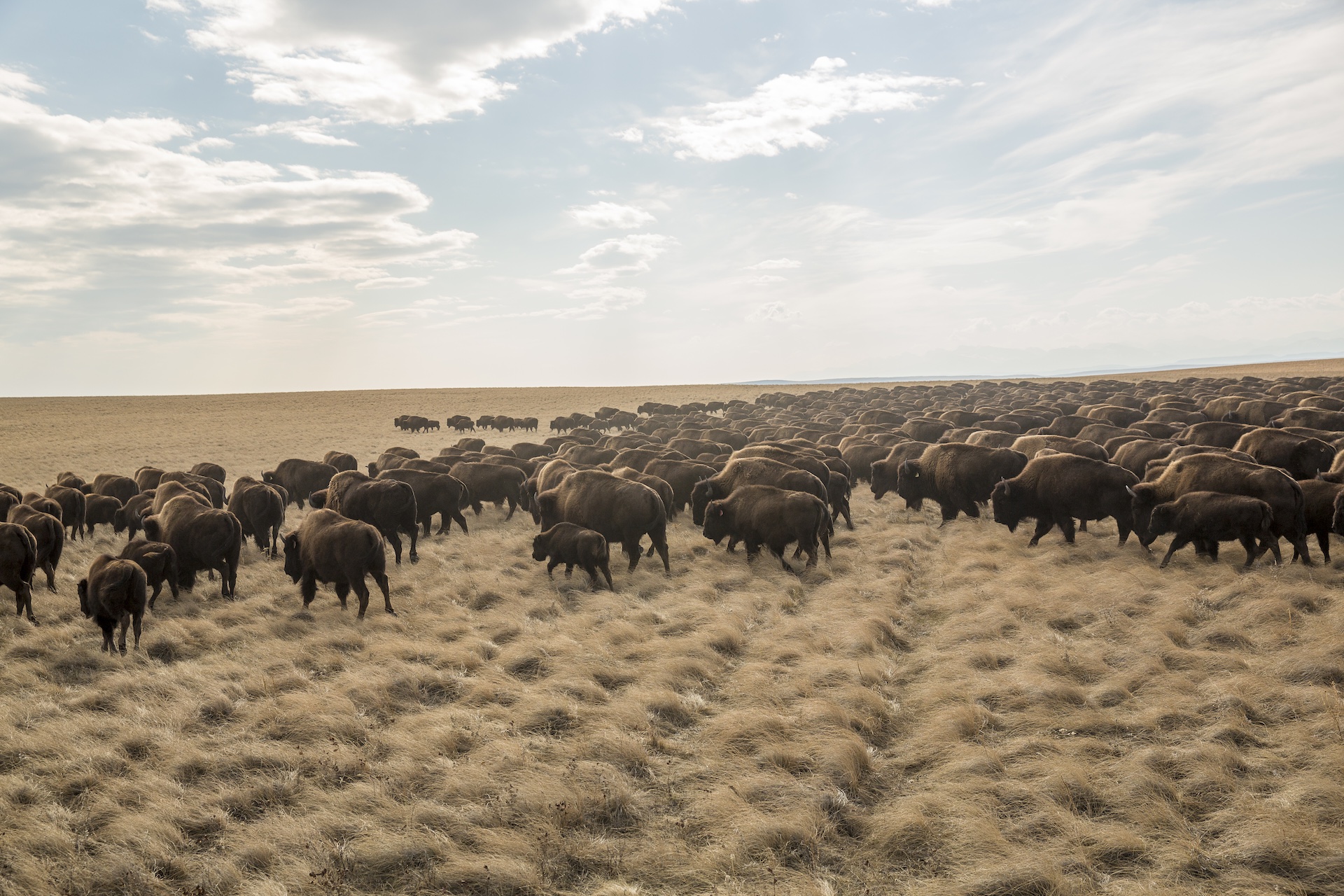Issue 28

Bison on the Blackfeet Indian Reservation in northern Montana moving
to their fall pasture.
Johns Louise Courtney White
Courtney White
Wildlife on the Move: The Pew Charitable Trusts issued a major report this week on wildlife migration routes in the American West. It synthesizes an avalanche of scientific data from radio collars and other monitoring sources into a strategic roadmap for landowners and conservation organizations. Not surprisingly, climate change is having an impact as drought and other factors alter migration routes. For ranchers, Pew recommends they adopt ‘virtual fences’ that use GPS to control livestock movement, eliminating the need for the real thing. This has important implications for climate adaptation since fixed fences may hinder management flexibility under hotter-and-drier conditions. Pew is a strong supporter of nature-based solutions, evidenced in these seven carbon projects around the world.
 Juliana Birnbaum
Juliana Birnbaum
Catching fog to harvest water: As a resident of the San Francisco Bay Area, a famously foggy region, I was intrigued to learn more about “fog harvesting,” a technique employed by traditional and indigenous groups in various parts of the globe. The practice can address water scarcity by capturing water particles from fog using a mesh that draws it into a reservoir. The method described in this article yielded three to five liters of water per square meter a night when used in Oaxaca. However, as this recent New York Times piece reports, science and local observation suggest there is less fog than in the past in California and around the world.
 Kavya Gopal
Kavya Gopal
Putting sociopolitical systems at the heart of climate modeling: I was really excited to come across this paper on a “coupled climate-social system” model published earlier this year. For those whose eyes glaze over at the mention of climate models let me try to explain why I find this significant. Most often, climate models, if they include social and political variables, treat human decisions that determine greenhouse gas emissions as externally determined. In reality, climate impacts are constantly changing human behavior. For example, an increase in oil prices or an extreme heat wave change consumption and voting patterns. But such complex interactions are difficult to model and rarely captured by climate models. The social-climate system model is a necessary breath of fresh air. We need even more climate models that model these complex feedback loops and see climate systems as social systems and vice versa.
 Robert Denney
Robert Denney
Netflix Show Explains Climate Change to Preschoolers: Some of us may remember The Lorax as the children’s book/film that taught us about how human development can harm the natural environment. Since then, some children’s television shows have aired single episodes addressing climate change, but now this is the core topic of an entire Netflix series aimed at preschoolers. The cartoon show, Octonauts: Above and Beyond, tells the stories of creatures traveling the world to rescue animals from rising seas, drought, and intense heat. The show tries to strike a balance by informing 4-year-olds on a complex topic in a way that is not alarming, which is difficult to do with climate change. Some experts have expressed concern that the show does not explain that climate change is caused by burning fossil fuels, but the show does exemplify how helpful it may be to talk about climate change with children starting at a young age.
 Amy Boyer
Amy Boyer
If you remove it, they will come: Just a year after a dam was removed from Mill Creek near Santa Cruz, California, steelhead trout and endangered coho salmon were found in the creek. Coho salmon have never been recorded there, even though without the dam it is excellent habitat for them. From just a few salmon, there is potential for many more: Putah Creek, near me, went from near zero chinook salmon to hundreds yearly after a set of accords to improve flows for fish. Unfortunately, floods last year washed sediment from burn scars, resulting in low-oxygen water and a massive fish kill at Putah Creek, where agencies and scientists are working together to understand how to respond to similar problems in the future. Researchers and restoration workers at both creeks say that ongoing community effort is key to not only restore but increase resilience in the face of climate change's challenges.
 Benjamin Felser
Benjamin Felser
Overflowing abundance in the city of drought: Brad Lancaster models abundance where most people would only find scarcity. In the city of Tucson, which receives ~25 cm of water annually, he has produced his own refuge of verdant space. He started diverting local runoff and harvesting rainwater 25 years ago, and his efforts have since flowered, fruited and otherwise sprouted. Inspired by Mr. Zephania Phiri Maseko who restored barren land in Rhodesia by creating water refuges in an otherwise barren landscape, Lancaster models successful use of monsoon season rains for local personal use. He is currently working with the city of Tucson to legalize and further incentivize the work he’s engaged with on his land to transform a city otherwise on track to be devastated by warming and drought.
 Claire Krummenacher
Claire Krummenacher
Celebrating hope with climate fiction: For the second annual "Imagine 2200: Climate Fiction for Future Ancestors" contest, writers from across the world submitted stories to Fix (Grist's Solutions Lab) that offered visions of abundance, adaptation, reform, and hope. The winning features transport readers across time and introduce them to an incredible cast of characters, including a Jamaican woman taught valuable lessons by the sea, fishers navigating the shark habitats of Hawai'i in 2112, and seven sisters running a tea farm threatened by malfunctioning robots. I also loved the editor's note on how working on the collection has been an uplifting reminder of the transformative power of stories in shaping our beliefs and values.
Want the Waggle coming to your inbox instead? Click Here to Subscribe!
